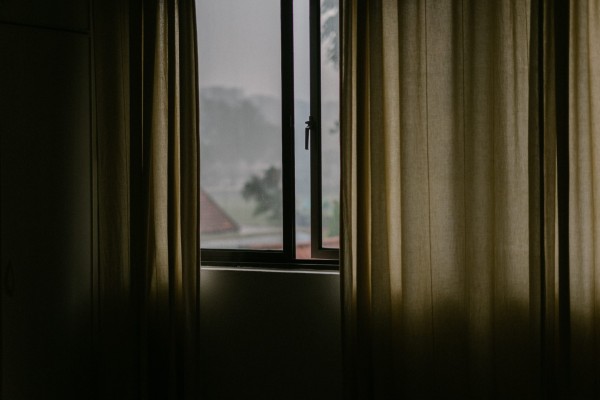References
- References
- World Health Organization. Coronavirus disease (COVID-19): How is it transmitted? Geneva, Switzerland 2020 [updated 30 April 2021]. Available from: https://www.who.int/news-room/q-a-detail/coronavirus-disease-covid-19-how-is-it-transmitted.
- CDC. SARS-CoV-2 Transmission US Department of Health & Human Services; 2021 [updated 7 May 2021]. Available from: https://www.cdc.gov/coronavirus/2019-ncov/science/science-briefs/sars-cov-2-transmission.html.
- Allen JG, Ibrahim AM. Indoor Air Changes and Potential Implications for SARS-CoV-2 Transmission. JAMA. 2021; 325(20): 2112-3. DOI: 10.1001/jama.2021.5053.
- National Academies of Sciences, Engineering, and Medicine. Airborne Transmission of SARS-CoV-2: Proceedings of a Workshop – in Brief. Washington, DC: The National Academies Press; 2020. Available from: https://www.nap.edu/catalog/25958/airborne-transmission-of-sars-cov-2-proceedings-of-a-workshop.
- The Lancet COVID-19 Commission Task Force on Safe Work, Safe School, and Safe Travel. Six Priority Areas. 2021. Available from: https://static1.squarespace.com/static/5ef3652ab722df11fcb2ba5d/t/60a3d6713c9af62b4c2037ff/1621350002802/Safe+Work%2C+Safe+School%2C+Safe+Travel+%28Feb+2021%29.pdf
- Wang CC, Prather KA, Sznitman J, et al. Airborne transmission of respiratory viruses. Science. 2021; 373(6558): eabd9149. DOI: 10.1126/science.abd9149.
- American Animal Hospital Association. Infection control strategies 2021. Available from: https://www.aaha.org/aaha-guidelines/infection-control-configuration/infection-control-strategies.
- Ministry of Health. COVID-19: Self-isolation, managed isolation/quarantine 2021 [updated 22 August 2021]. Available from: https://www.health.govt.nz/our-work/diseases-and-conditions/covid-19-novel-coronavirus/covid-19-health-advice-public/covid-19-self-isolation-managed-isolation-quarantine.
- Wong SC, Chen H, Lung DC, et al. To prevent SARS-CoV-2 transmission in designated quarantine hotel for travelers: Is the ventilation system a concern? Indoor Air. 2021; 31(5): 1295-7. DOI: 10.1111/ina.12870.
- CDC. Improving Ventilation in Your Home 2021 [updated 7 January 2021]. Available from: https://www.cdc.gov/coronavirus/2019-ncov/prevent-getting-sick/Improving-Ventilation-Home.html.
- EPA. Indoor Air in Homes and Coronavirus (COVID-19): United States Environmental Protection Agency; 2021 [updated 16 July 2021]. Available from: https://www.epa.gov/coronavirus/indoor-air-homes-and-coronavirus-covid-19.
- Ministry of Education. Designing Quality Learning Spaces: Indoor Air Quality and Thermal Comfort – Version 1.0, September 2017. 2017. Available from: https://www.education.govt.nz/assets/Documents/Primary-Secondary/Property/Design/Flexible-learning-spaces/DQLSIndoorAirQualityThermalComfortV1-0.pdf.
- Starr D. The air investigator. Science. 2021; 373(6555): 612-5. DOI: 10.1126/science.373.6555.612.
- CDC. COVID-19: Schools and Child Care – K-12 Schools 2021 [updated 5 August 2021]. Available from: https://www.cdc.gov/coronavirus/2019-ncov/community/schools-childcare/k-12-guidance.html#.
- Grout L, Katar A, Ait Ouakrim D, et al. Estimating the failure risk of quarantine systems for preventing COVID-10 outbreaks in Australia and New Zealand. Med J Aust. 2021; https://www.mja.com.au/journal/2021/estimating-failure-risk-quarantine-systems-preventing-covid-19-outbreaks-australia-and [Preprint, 9 July 2021].
- Grout L, Katar A, Summers J, et al. Australia’s Quarantine Systems Failures: Lessons for NZ. University of Otago, New Zealand 2021. Available from: https://blogs.otago.ac.nz/pubhealthexpert/australias-quarantine-systems-failures-lessons-for-nz/.
- Covid19 coronavirus: How three returnees caught virus at Pullman Hotel. New Zealand Herald. 2021 (16 February); Sect. New Zealand. Available from: https://www.nzherald.co.nz/nz/covid-19-coronavirus-how-three-returnees-caught-virus-at-pullman-hotel/PBC22AJTEKXBJ7TLZUCXNKUZOI/.
- Ministry of Business Innovation & Employment. Pullman MIQ facility to reopen to full capacity following report release [press release]. New Zealand, 23 April 2021. Available from: https://www.miq.govt.nz/about/news/pullman-miq-facility-to-reopen-to-full-capacity-following-report-release/
- Ministry of Health. 1 case of COVID-19 in quarantine worker [press release]. New Zealand, 7 November 2020. Available from: https://www.health.govt.nz/news-media/media-releases/1-case-covid-19-quarantine-worker
- Hadfield J, Douglas J, Geoghegan J, et al. Re-emergence of community transmission in Aotearoa New Zealand – Genomic overview of the Auckland Outbreak. (Accessed 28 October 2020). ESR. https://nextstrain.org/community/narratives/ESR-NZ/GenomicsNarrativeSARSCoV2/2020-10-01?n=5.
- Leahy B. Covid19 coronavirus: Rydges Hotel worker may have caught virus using a lift. New Zealand Herald. 2020 (20 August). Available from: https://www.nzherald.co.nz/nz/covid-19-coronavirus-rydges-hotel-worker-may-have-caught-virus-using-a-lift/ECOIYGF3V4UY4FJGU2QIKJD3NQ/.
- Eichler N, Thornley C, Swadi T, et al. Transmission of Severe Acute Respiratory Syndrome Coronavirus 2 during Border Quarantine and Air Travel, New Zealand (Aotearoa). Emerg Infect Dis. 2021; 27(5). DOI: 10.3201/eid2705.210514.
- Ministry of Health. No new cases of COVID-19 [press release]. New Zealand, 2 October 2020. Available from: https://www.health.govt.nz/news-media/media-releases/no-new-cases-covid-19-50
- Lewis D. COVID-19 rarely spreads through surfaces. So why are we still deep cleaning? Nature. 2021; (E-publication 29 January). https://www.nature.com/articles/d41586-021-00251-4.
- Meyerowitz EA, Richterman A, Gandhi RT, et al. Transmission of SARS-CoV-2: A Review of Viral, Host, and Environmental Factors. Ann Intern Med. 2021; 174(1): 69-79. DOI: 10.7326/M20-5008.
- Ministry of Health. 2 new cases of COVID-19 [press release]. New Zealand, 27 September 2020. Available from: https://www.health.govt.nz/news-media/media-releases/2-new-cases-covid-19-21
- Ministry of Health. 2 cases of COVID-19 in managed isolation; update on Northland case [press release]. New Zealand, 26 January 2021. Available from: https://www.health.govt.nz/news-media/media-releases/2-cases-covid-19-managed-isolation-update-northland-case
- Ministry of Health. Update on Northland case, and 6 cases of COVID-19 in managed isolation [press release]. New Zealand, 25 January 2021. Available from: https://www.health.govt.nz/news-media/media-releases/update-northland-case-and-6-cases-covid-19-managed-isolation
- Ministry of Health. 3 new cases of COVID-19 at the border and an update on border-related cases in Auckland [press release]. New Zealand, 28 January 2021. Available from: https://www.health.govt.nz/news-media/media-releases/3-new-cases-covid-19-border-and-update-border-related-cases-auckland
- Ministry of Health. 7 cases of COVID-19 [press release]. New Zealand, 4 February 2021. Available from: https://www.health.govt.nz/news-media/media-releases/7-cases-covid-19
- Ministry of Health. 4 new cases of COVID-19 in managed isolation; 1 historical case [press release]. New Zealand, 27 January 2021. Available from: https://www.health.govt.nz/news-media/media-releases/4-new-cases-covid-19-managed-isolation-1-historical-case
- Ministry of Health. 4 cases of COVID-19 in managed isolation [press release]. New Zealand, 2 February 2021. Available from: https://www.health.govt.nz/news-media/media-releases/4-cases-covid-19-managed-isolation-0
- Nichols L. Covid 19 coronavirus: Officials investigating if positive MIQ case caught virus from another guest. New Zealand Herald. 2021 (22 March); Sect. New Zealand. Available from: https://www.nzherald.co.nz/nz/covid-19-coronavirus-officials-investigating-if-positive-miq-case-caught-virus-from-another-guest/UDW4MLSP3ONM34WUPMM5I6OLJA/.
- Ministry of Health. No new community cases; 6 cases of COVID-19 in managed isolation [press release]. New Zealand, 25 March 2021. Available from: https://www.health.govt.nz/news-media/media-releases/no-new-community-cases-6-cases-covid-19-managed-isolation-0
- Small Z. COVID-19 transmission at Auckland’s Jet Park quarantine facility likely from room doors being opened simultaneously. Newshub. 2021 (17 August). Available from: https://www.newshub.co.nz/home/politics/2021/08/covid-19-transmission-confirmed-at-auckland-s-jet-park-quarantine-facility-from-room-doors-being-opened-simultaneously.html.
- Ministry of Business Innovation & Employment, Ministry of Health. Low risk in-facility transmission confirmed at Jet Park MIQ facility [press release]. New Zealand, 17 August 2021. Available from: https://www.health.govt.nz/news-media/media-releases/low-risk-facility-transmission-confirmed-jet-park-miq-facility
- Ministry of Health. 11 additional community cases; 6 new cases and 2 historical cases in managed isolation facilities [press release]. New Zealand, 19 August 2021. Available from: https://www.health.govt.nz/news-media/media-releases/11-additional-community-cases-6-new-cases-and-2-historical-cases-managed-isolation-facilities
About the Briefing
Public health expert commentary and analysis on the challenges facing Aotearoa New Zealand and evidence-based solutions.
Subscribe

Public Health Expert Briefing
Get the latest insights from the public health research community delivered straight to your inbox for free. Subscribe to stay up to date with the latest research, analysis and commentary from the Public Health Expert Briefing.

